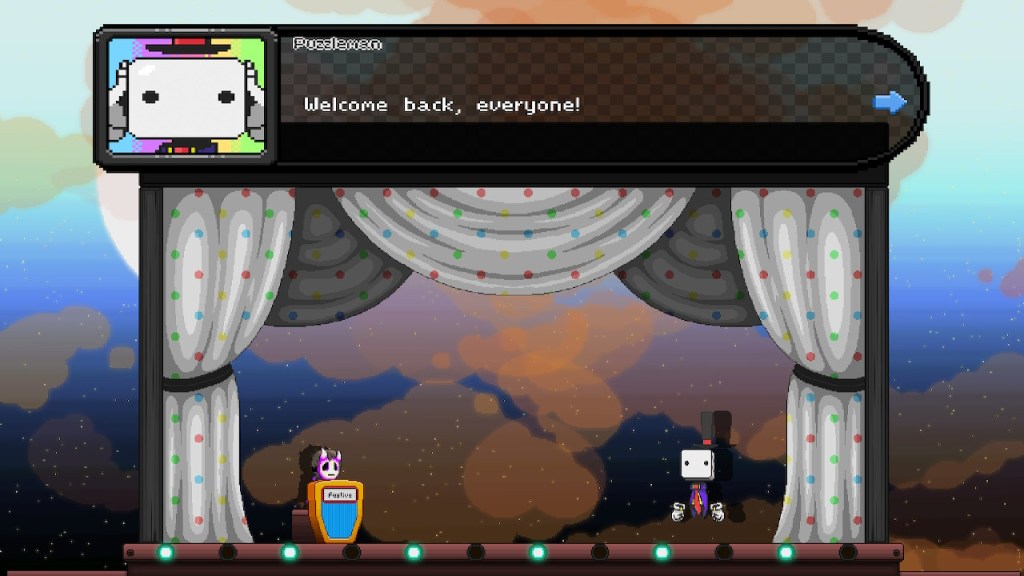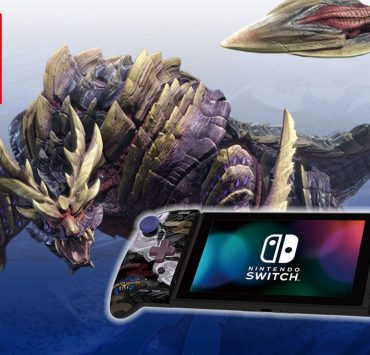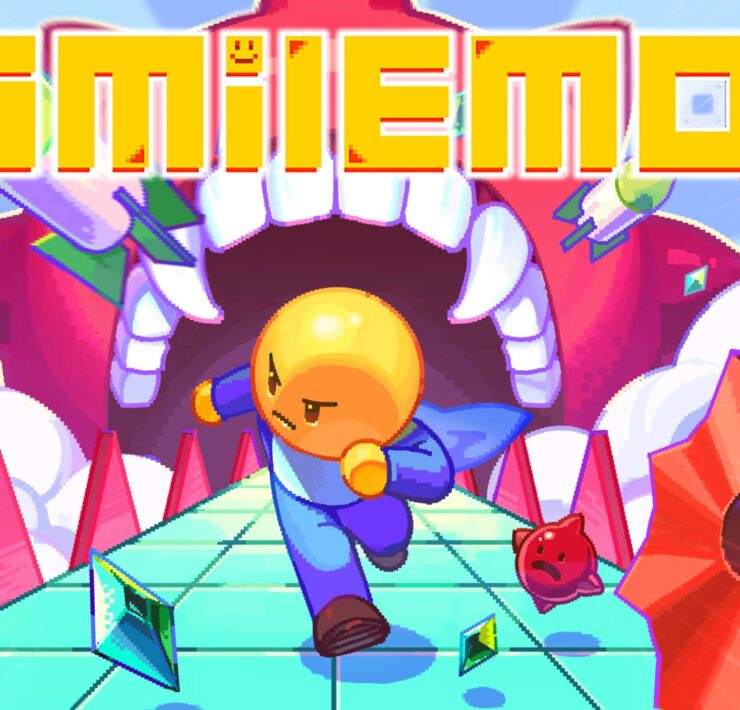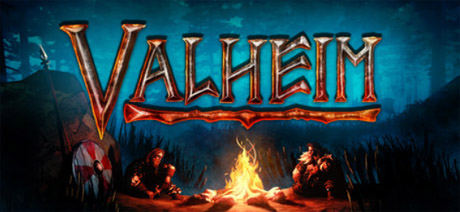Underhero Switch Review – Time to Kick Royal Butt!

Underhero is a pixel art sidescroller that beautifully blends platforming exploration with Paper Mario style RPG combat to make for a truly engaging game from start to finish. The story of a nameless underling who accidentally kills the fated hero and has to take his place is a funny and original concept that really carries the story and its characters to fun and hilarious places. Underhero is certainly worth your attention.
After an opening crawl that tells of heroes saving princesses from villains and their hordes, time and time again, you begin the game as one of these young heroes, level 99 and with 9999 HP. The hero on the victory lap in the villain’s lair. Meanwhile, three generic and identical goons are plotting what to do once the hero arrives; dropping some pseudo-fourth-wall-breaking nods to video game tropes reminiscent of those found in The Messenger.

Before the hero can make it to the big boss’ room, one of the goons manages to crush him under a chandelier, and now you take control of that goon for the rest of the game. The underling becomes the Underhero. Guided by the hero’s former companion, the robotic and bossy hilt of a powerful sword known as Elizabeth IV, you must play the role of the hero while still passing for an underling.
It’s a clever premise that does what a lot of indie games do these days: take established tropes, lean heavily into them while poking fun at them, and then breaking them apart in order to form something charmingly original. In this sense, Underhero is joining the ranks of clever and adorable indie darlings like Undertale, Shovel Knight, and the aforementioned The Messenger.
As far as gameplay goes, Underhero deftly blends the traversal mechanics of a simple 2D platformer with the battle mechanics of a JRPG. But all of that comes with a lot of quirks and caveats. The platforming isn’t overly complex or pacey, and the exploration is pretty straightforward. There are hidden areas and secrets, and as the game progresses it manages to find new and interesting ways to keep traversal neat and fun from beginning to end. Everything about the movement and platforming works exactly as well as it needs to in order to stop and aspect of the game from growing stale.

It’s in the battle mechanics where the game really shines, however. The RPGs of yore that have taken the tried-and-true battle formula and injected it with a few unique elements – they’re the games you remember. If you ever played Shadow Hearts on the PS2, you’ll undoubtedly and fondly remember that game’s ring system, which used a roulette wheel to determine whether each party member’s attack would hit, miss, or do bonus damage. If you had good rhythm and timing, or you practiced enough, you could land a critical hit with every single turn. These were the extra details that kept RPGs fresh, and we’ve seen less of them in recent years.
Cue Underhero, which really livens up the formula once more. That said, nothing here is entirely original, and the battle mechanics in Underhero are hugely reminiscent of the Paper Mario games, and Super Mario RPG before them. Not that this comparison matters; if a mechanic works well, it works well. And Underhero’s battles work.
Battles play out in an isolated area, like in most JRPGs, except you don’t enter a special battle arena; the fight simply takes place where you’re standing, sort of like how the Yakuza series subtly changed that up with Yakuza 6 and the Dragon Engine. Once you’re in battle, you have a few options you can choose from: a quick sword attack, a jump or duck that allows you to dodge, a slingshot attack to take care of flying or distant foes, and a hammer attack for a slow but heavy hit.

Each of these four choices is made with one of the face buttons (and down for duck). Meanwhile, enemies have specific tells before each of their attacks, which you come to identify and react to accordingly, with either a jump or a duck. It’s all incredibly intuitive, and turns the game from an RPG into a kind of rhythm game. You wait for the right moment, duck or jump, then attack. The game’s developers also know that a rhythm begins to develop because they added a feature which allows you to get in a few bonus hit points with a sword swing that hits in time with the game’s music (which is stellar, by the way; more on that below).
The battle mechanics also hinge on a stamina meter that depletes with every move you make, and raises again slowly when you’re idle, and faster if you execute a suggessful dodge. In other words, this is a very active battle system. You’re always engaged, always reading enemy moves and reacting to them. You need to time your attacks, listen for the beat, and watch your stamina meter. There’s an awful lot to juggle and it really keeps you on your toes, despite how cartoonish the game might appear.
Which brings me to the combat’s one drawback: it gets really hard really fast. Underhero plays off RPG tropes of collecting MacGuffins and defeating bosses before moving on to the next world. The first main world also serves as a kind of long and gradual tutorial. Moves are slowly introduced and taught to you by your companion, Elizabeth IV. Once you’re up to speed, you face off against a challenging but fair foe. The next world raises the stakes enormously, however. Get ready for a serious difficulty spike, which can be overcome with some focus and practice. Although, even after you find your rhythm, another spike will rise up from nowhere. It definitely feels unbalanced and borderline unfair at this point in the game.

The only real issue in the exploration department is that the platforming sometimes feels inaccurate, almost slippery. Platformers live or die by whether or not a miss-timed jump or bad landing feels like it was the fault of the player or the game. A tightly made platformer always points the blame at the player: you need to get better at the game. But Underhero often feels like it is the one at fault, with slippery and imprecise controls, especially in very narrow moments of platforming where the stakes are at their highest. This is more of an issue with the glide mechanic than with surface-to-surface jumps, admittedly, but neither are perfect. Overall, this is a small problem, given how fantastic the rest of the gameplay, especially the combat, is, but it’s frustrating, nonetheless.
The music in Underhero is truly spectacular. The game has been out on PC for a while now, and I’m honestly shocked that more people haven’t been talking about how excellent the soundtrack is. While it is a pixel art 2D sidescroller, the music can be incredibly bombastic. There’s massive depth and range to the music here, with clever hooks and melodies that really blend masterfully with each new environment. In terms of how well each piece fits with the story and setting, composer Stijn van Wakeren is on par with the legendary Grant Kirkhope of Banjo-Kazooie and Yooka-Laylee fame.

The only issue with the music is that it does get a little repetitive. Every single track is stellar, for sure, but there isn’t that much variety to them. Each track usually winds up outstaying its welcome and growing a little stale, which is a shame given the range and quality of the music here. We just needed a little more, but that was probably down to a whole host of development restraints.
One small niggle in the audio department is with the sound bite which plays whenever you hit the swim button underwater. It sounds more like the kind of “cancel” sound made when an action can’t be done in, rather than anything related to water. It’s a tiny niggle, but one that did bug me all the way through the game.
In both art direction and animation, Underhero looks gorgeous. It has this pop art colour palette that really blends with its tone and themes. The enemy design, while simple, works well. They’re basic sprites for the most part, but that makes them clearly defined and memorable. I could easily draw a handful of them from memory alone, and that is the sign of some good character design.

The simple enemy design also works well practically in combat as well. The game’s battles hinge on you being able to read enemy tells in order to determine how you should react – jump, duck, block – and a simple design means very crisp and clear animation. The snakes which you first meet, for example, have long tongues and big eyes, which are key to determining what you do in order to avoid damage. Seeing the hissing tongue or blinking eyes is key, and they’re emphasised perfectly in the enemy design.
The world itself is also bold and bright. The game does make use of some darker areas, but it’s in the outside world where it really pops. Bright, colourful, charming environments make for a happy place to spend time in.
While the visuals are, for the most part, outstanding, especially in the animation department, there are two small frustrations. One is that the pause menu is entirely functional. No special music plays; no unique aesthetics are displayed. It’s just a black screen with a list of options in white. Never a duller pause screen have I seen.

The other issue is more down to personal taste: internal areas come across as very flat and uninspired. Caves and dungeons become samey, and dizzyingly repetitive. Fortunately, they never last overly long. On top of this, the game has a very flat appearance. Most 2D sindescrollers still give the illusion of depth, but Underhero has more of a Paper Mario aesthetic without the paper. And without the paper making it seem like a stylistic choice, it winds up feeling a little drab, which pairs unfortunately well with the bland interior aesthetics.
At 12-14 hours, Underhero is a very decently sized game. Its combat mechanics remain engaging from beginning to end thanks to a variety that’s cleverly baked in from the word go. And the various settings offer enough variety to keep you engaged and entertained. As for the story, it offers a few fun twists and turns, but what really makes Underhero stand out is that tongue-in-cheek attitude to video game design and some real wit behind its characters.
Nothing about Underhero breaks the mould. It isn’t a game that treads truly new ground. Everything about it is inspired by other games, from its setting to its mechanics, its visuals to its sense of humour. But everything Underhero does, it does so very well. Apart from a few awkward blips in the combat and platforming mechanics, and some cases of unfair difficulty spikes, Underhero is a charming game that’s full of heart, and one that is absolutely worth your time. It’s sweet, well written, incredibly fun to play, and supported with outstanding design and music. A real gem.
Underhero Review provided by Nintendo Link
Publisher: Digerati
Developer: Paper Castle Games
Release Date: February 27, 2020
Price: $19.99, £15.29, €16,99
Game Size: 2.1 GB

A refined and consistently engaging battle system
Witty, funny, tongue-in-cheek character writing and storytelling
A stellar soundtrack from beginning to end
Memorable and beautifully animated character and enemy designs
Some unbalanced and unfair difficulty spikes
Loose and awkward platforming in places
A lack of variety in music tracks and level designs
What's Your Reaction?
Will Heath is a freelance writer and digital nomad from the UK who mostly splits his time between London and Tokyo. He runs the website Books & Bao – a site dedicated to international literature and world travel – and writes about video games for Nintendo Link and Tokyo Weekender.












